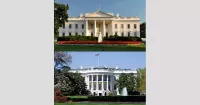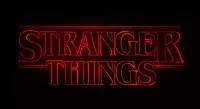The New York Times (NYT) is a prominent American newspaper based in New York City. It provides extensive coverage of domestic, national, and international news, along with opinion pieces, investigative reports, and reviews, solidifying its role as a newspaper of record in the U.S. As of 2023, it boasts 9.13 million subscribers, including 8.83 million online subscribers. The New York Times Company, chaired by the Ochs-Sulzberger family since 1896 with A. G. Sulzberger as the current chairman and publisher, publishes the newspaper. The NYT is headquartered in Midtown Manhattan's New York Times Building.
1905: Opening of Times Tower
In 1905, The New York Times opened Times Tower, symbolizing the newspaper's expansion.
December 30, 1914: Nameplate Descender Change
On December 30, 1914, The New York Times shortened the descender of the "h" in its nameplate.
1918: First Pulitzer Prize
Since 1918, The New York Times has been awarded the Pulitzer Prize 132 times, the most of any publication.
June 13, 1920: Editorial Opposing Harding
On June 13, 1920, The New York Times ran an editorial on the front page opposing Warren G. Harding's nomination during the Republican Party presidential primaries.
1927: New York Yankees comparison
The New York Times was compared to the New York Yankees during their 1927 season containing Murderers' Row.
April 1935: Death of Adolph Ochs
In April 1935, Adolph Ochs died, leading to his son-in-law Arthur Hays Sulzberger becoming the publisher of The New York Times.
1935: Arthur Hays Sulzberger Succeeds Adolph Ochs
In 1935, Arthur Hays Sulzberger succeeded his father-in-law, Adolph Ochs, as publisher of The New York Times, initiating a push into European news coverage.
February 1942: The New York Times Crossword Debuts
In February 1942, The New York Times crossword debuted in The New York Times Magazine.
1944: Acquisition of WQXR-FM
In 1944, amidst World War II, Arthur Hays Sulzberger expanded The New York Times's operations further, acquiring WQXR-FM, marking the first non-Times investment since the Jones era.
April 1945: Recruitment of William L. Laurence for Manhattan Project
In April 1945, the United States government recruited journalist William L. Laurence to document the Manhattan Project. Laurence became the only witness of the Manhattan Project, a detail realized by employees of The New York Times following the atomic bombing of Hiroshima.
December 28, 1953: Page Size Reduction
On December 28, 1953, The New York Times reduced its page size to 15.5 inches (390 mm) due to an increase in paper costs.
February 14, 1955: Further Page Size Reduction
On February 14, 1955, The New York Times further reduced its page size to 15 inches (380 mm).
August 8, 1959: Paddle Wheel Headline Debut
On August 8, 1959, The New York Times used a "paddle wheel" headline when it was revealed the United States was monitoring Soviet missile firings and when Explorer 6 launched.
1960: "Heed Their Rising Voices" Advertisement
In 1960, The New York Times published "Heed Their Rising Voices", a full-page advertisement purchased by supporters of Martin Luther King Jr. criticizing law enforcement in Montgomery, Alabama for their response to the civil rights movement. Montgomery Public Safety commissioner L. B. Sullivan sued the Times for defamation.
April 1961: Orvil Dryfoos Appointed Publisher
In April 1961, Arthur Hays Sulzberger resigned and appointed his son-in-law, The New York Times Company president Orvil Dryfoos, as publisher. Under Dryfoos, The New York Times established a newspaper based in Los Angeles.
1962: Implementation of Automated Printing Presses
In 1962, the implementation of automated printing presses in response to increasing costs at The New York Times mounted fears over technological unemployment.
March 1963: Conclusion of Typographical Union Strike
In March 1963, the New York Typographical Union strike concluded, leaving New York with three remaining newspapers: the Times, the Daily News, and the New York Post.
1963: Arthur Ochs Sulzberger Becomes Publisher
In 1963, Arthur Ochs Sulzberger became the publisher of The New York Times, adapting to a changing newspaper industry and introducing radical changes.
1964: New York Times Co. v. Sullivan Supreme Court Case
In 1964, The New York Times was involved in the landmark U.S. Supreme Court case New York Times Co. v. Sullivan, which restricted the ability of public officials to sue the media for defamation.
February 21, 1967: Nameplate Redesign
On February 21, 1967, The New York Times introduced the largest change to its nameplate. Type designer Ed Benguiat redesigned the logo, most notably turning the arrow ornament into a diamond and dropping the period after 'Times'.
March 31, 1968: Press Stoppage: Johnson's Announcement
On March 31, 1968, The New York Times halted its printing process when President Lyndon B. Johnson announced that he would not seek a second term.
1971: Publication of the Pentagon Papers
In 1971, The New York Times published the Pentagon Papers, an internal Department of Defense document detailing the United States's historical involvement in the Vietnam War, facing pushback from then-president Richard Nixon. The Supreme Court ruled in favor of the Times in New York Times Co. v. United States (1971), guaranteeing the right to publish the Pentagon Papers under the First Amendment.
1971: Supreme Court Rules in Favor of NYT over Pentagon Papers
In 1971, the Supreme Court ruled in The New York Times's favor in New York Times Co. v. United States, allowing the Times and The Washington Post to publish the Pentagon Papers.
1978: Newspaper Strike
In 1978, The New York Times, the Daily News, and the New York Post were the subject of a strike, allowing emerging newspapers to leverage halted coverage.
January 21, 1981: Paddle Wheel Headline: Reagan Inauguration and Iran Hostage Crisis
On January 21, 1981, The New York Times used a paddle wheel headline when Ronald Reagan was sworn in as president and Iran released fifty-two American hostages.
May 1983: First Front-Page Article on AIDS Epidemic
In May 1983, The New York Times ran its first front-page article on the AIDS epidemic. Max Frankel's editorial coverage of the epidemic, with mentions of anal intercourse, contrasted with then-executive editor A. M. Rosenthal's puritan approach, intentionally avoiding descriptions of the luridity of gay venues.
1985: Minority Stake in Newsprint Plant
In 1985, The New York Times Company established a minority stake in a US$21.7 million newsprint plant in Clermont, Quebec through Donahue Malbaie.
1986: Times Began to Use Ms
In 1986, the Times began to use Ms.
January 1992: Arthur Ochs Sulzberger Resigns
In January 1992, Arthur Ochs Sulzberger resigned, appointing his son, Arthur Ochs Sulzberger Jr., as publisher of The New York Times.
1993: Acquisition of The Boston Globe
In 1993, The New York Times Company acquired The Boston Globe.
May 1994: @times on America Online
In May 1994, @times appeared on America Online's website as an extension of The New York Times, featuring news articles, film reviews, sports news, and business articles.
May 19, 1994: Press Stoppage: Death of Jacqueline Kennedy Onassis
On May 19, 1994, The New York Times stopped its presses due to the death of former first lady Jacqueline Kennedy Onassis.
March 14, 1995: 50,000th Issue Celebration
On March 14, 1995, The New York Times celebrated the printing of its 50,000th issue, an observance that should have occurred on July 26, 1996.
1995: Publication of Industrial Society and Its Future
In 1995, The New York Times published domestic terrorist Ted Kaczynski's essay Industrial Society and Its Future, contributing to his arrest after his brother David recognized the essay's penmanship.
July 17, 1996: Press Stoppage: TWA Flight 800
On July 17, 1996, The New York Times halted printing for the crash of Trans World Airlines Flight 800.
July 26, 1996: Corrected 50,000th Issue Date
July 26, 1996, was the date that The New York Times should have celebrated the printing of its 50,000th issue, after an error in issue numbering was discovered.
1996: Launch of nytimes.com
In 1996, The New York Times launched nytimes.com, marking the beginning of its progression into digital technology.
1997: Primary Distribution Center
Since 1997, The New York Times's primary distribution center is located in College Point, Queens.
1999: The New York Times Manual of Style and Usage Published on Intranet
In 1999, The New York Times Manual of Style and Usage was published on the Times's intranet.
December 31, 1999: End of Issue Number Error
From February 7, 1898, to December 31, 1999, The New York Times's issue number was incorrect by five hundred issues.
July 26, 2000: Paddle Wheel Headline: Camp David Summit and Cheney Nomination
On July 26, 2000, The New York Times used a paddle wheel headline when the 2000 Camp David Summit ended without an agreement and when George W. Bush announced Dick Cheney as his running mate.
2000: Presidential Election Press Stoppages
During the 2000 presidential election, The New York Times had two press stoppages; one when Al Gore appeared to concede and another when he held off his concession.
2000: AP Stylebook's Removal of Honorifics
In 2000, the AP Stylebook removed honorifics, setting it apart from The New York Times.
August 2001: Website unblocked in China
In August 2001, The New York Times website was unblocked in China after then-general secretary Jiang Zemin met with journalists from The New York Times.
2001: Anthrax Attacks on The New York Times
In 2001, journalist Judith Miller was the recipient of a package containing a white powder during the 2001 anthrax attacks, furthering anxiety within The New York Times.
September 2002: Article Claiming Iraq Purchased Aluminum Tubes
In September 2002, Judith Miller and military correspondent Michael R. Gordon wrote an article for the Times claiming that Iraq had purchased aluminum tubes. The article was cited by then-president George W. Bush to claim that Iraq was constructing weapons of mass destruction.
March 2003: United States Invades Iraq
In March 2003, the United States invaded Iraq, beginning the Iraq War.
June 2003: Resignations of Howell Raines and Gerald M. Boyd
In June 2003, Howell Raines and Gerald M. Boyd resigned following a plagiarism scandal involving journalist Jayson Blair. Arthur Ochs Sulzberger Jr. appointed Bill Keller as executive editor.
September 3, 2005: Press Stoppage: Death of William Rehnquist
On September 3, 2005, The New York Times issued a printing stoppage for the death of William Rehnquist.
December 2005: Article on Warrantless Surveillance
In December 2005, an article in The New York Times disclosing warrantless surveillance by the National Security Agency contributed to further criticism from the George W. Bush administration and the Senate's refusal to renew the Patriot Act.
April 2006: Website Redesign
In April 2006, The New York Times redesigned its website with an emphasis on multimedia.
April 2006: The Book Review Podcast Debut
In April 2006, The New York Times's longest-running podcast, The Book Review Podcast, debuted as Inside The New York Times Book Review.
2006: Study on the Times' national distribution
In 2006, economists Lisa George and Joel Waldfogel examined the consequences of the Times's national distribution strategy and audience with circulation of local newspapers, finding that local circulation decreased among college-educated readers.
August 6, 2007: Largest Page Size Cut
On August 6, 2007, The New York Times implemented its largest page size reduction, cutting the pages to 12 inches (300 mm).
February 2008: Live Election System
In February 2008, The New York Times developed a live election system using the Associated Press's File Transfer Protocol (FTP) service and a Ruby on Rails application.
July 10, 2008: NYTimes Application Debut
The NYTimes application debuted with the introduction of the App Store on July 10, 2008.
2008: Scoop content management system Developed
In 2008, Scoop was developed to serve as a secondary content management system for editors working in CCI to publish their content on the Times's website.
August 2009: The New York Times Wine Club Established
In August 2009, The New York Times Wine Club was established during a dramatic decrease in advertising revenue.
April 3, 2010: iPad Version Release
On April 3, 2010, The New York Times released an iPad version of its application with select articles, coinciding with the release of the first-generation iPad.
June 2010: The New York Times licenses FiveThirtyEight blog
In June 2010, The New York Times entered a three-year agreement to license the political blog FiveThirtyEight, which was written by Nate Silver.
May 1, 2011: Press Stoppage: Killing of Osama bin Laden
On May 1, 2011, The New York Times issued a printing stoppage for the killing of Osama bin Laden.
May 2011: Instruction to Omit Honorific from Osama bin Laden's Name
Following the killing of Osama bin Laden in May 2011, editors were instructed to omit the honorific from Osama bin Laden's name.
June 24, 2011: Press Stoppage: Marriage Equality Act
On June 24, 2011, The New York Times issued a printing stoppage for the passage of the Marriage Equality Act in the New York State Assembly and its subsequent signage by Governor Andrew Cuomo.
July 2011: In-App Subscriptions
In July 2011, The New York Times applications on iPhone and iPad began offering in-app subscriptions.
January 2012: Times Releases Integrated Content Editor (ICE)
In January 2012, The New York Times released Integrated Content Editor (ICE), a revision tracking tool for WordPress and TinyMCE.
June 2012: Introduction of 纽约时报中文
In June 2012, The New York Times introduced a Chinese website, 纽约时报中文, in response to Chinese editions created by The Wall Street Journal and the Financial Times.
October 2012: Web and Windows 8 Applications
In October 2012, The New York Times released a web application for iPad and a Windows 8 application.
July 2013: Profitability Efforts
In July 2013, Adweek reported on The New York Times's efforts to ensure profitability through an online magazine and a "Need to Know" subscription.
July 2013: FiveThirtyEight sold to ESPN
In July 2013, FiveThirtyEight, which was previously licensed by The New York Times, was sold to ESPN.
November 2013: David Leonhardt plans data-driven newsletter
In November 2013, a memo revealed that David Leonhardt was planning to establish a data-driven newsletter with several collaborators.
2013: Academic citations study
In 2013, a study published in Science, Technology, & Human Values found that The New York Times received more citations in academic journals than several other publications.
March 2014: Application Announcements
In March 2014, The New York Times announced three applications—NYT Now, NYT Opinion and NYT Cooking—to diversify its product offerings.
April 2014: The Upshot Debuts
In April 2014, The Upshot, a data-driven newsletter, made its debut after Leonhardt's plans in November 2013.
September 2014: NYT Cooking Introduced
In September 2014, The New York Times introduced NYT Cooking, an application and website featuring recipes.
October 2014: Pew Research Center Analysis Places the Times as Ideologically Liberal
In October 2014, an analysis by Pew Research Center positioned The New York Times as ideologically liberal.
2014: Introduction of Spelling Bee
In 2014, The New York Times Magazine introduced Spelling Bee, a word game where players guess words from a set of letters and earn points, proposed by Will Shortz and created by Frank Longo.
2014: TimesMachine Maintained
Since 2014, The New York Times has maintained a virtual microfilm reader known as TimesMachine.
March 2015: DDoS attack on GitHub
In March 2015, a mirror of 纽约时报中文 and the website for GreatFire were the targets for a government-sanctioned distributed denial of service attack on GitHub.
August 2015: Criticism for opinion piece on gender
In August 2015, The New York Times received criticism for publishing an opinion piece by Richard A. Friedman called "How Changeable Is Gender?", which was criticized for suggesting parents might be right to let children suffer from dysphoria.
December 5, 2015: Editorial on San Bernardino Shooting
On December 5, 2015, The New York Times ran an editorial on its front page advocating for the prohibition of "slightly modified combat rifles" following a terrorist attack in San Bernardino, California.
2015: Introduction of Gender-Neutral Title Mx.
In 2015, The New York Times introduced the gender-neutral title Mx.
January 2016: Amanda Cox named editor of The Upshot
In January 2016, Amanda Cox was named the editor of The Upshot.
February 2016: Introduction of The New York Times en Español
In February 2016, The New York Times introduced The New York Times en Español, a Spanish website with translated articles and reporting from journalists based in Mexico City, intended to be read on mobile devices.
May 2016: Partnership with Chef'd announced
In May 2016, The New York Times Company announced a partnership with startup Chef'd to form a meal delivery service with NYT Cooking recipes.
June 24, 2016: Paddle Wheel Headline: Brexit and Supreme Court Deadlock
On June 24, 2016, The New York Times used a paddle wheel headline when the United Kingdom European Union membership referendum passed, beginning Brexit, and when the Supreme Court deadlocked in United States v. Texas.
October 2016: The New York Times Publishes Access Hollywood Tape
In October 2016, The New York Times published Trump's Access Hollywood tape, containing expletives on its front page for the first time.
December 2016: Removal of news applications from the App Store in China
In December 2016, Chinese authorities requested the removal of The New York Times's news applications from the App Store.
2016: TimesMachine expanded
In 2016, TimesMachine expanded to include archives from 1981 to 2002.
February 1, 2017: The Daily podcast debut
On February 1, 2017, The New York Times launched The Daily, a daily news podcast hosted by Michael Barbaro.
March 2017: Trump Interview on Headline Alteration
In March 2017, Donald Trump noted in an interview with Time that The New York Times altered a headline about intercepted Russian data. He claimed the print version on January 20 used "wiretapped," while the digital version on January 19 omitted it.
July 2017: The New York Times Repeated Explicit Phrase
In July 2017, The New York Times repeated an explicit phrase for fellatio stated by then-White House communications director Anthony Scaramucci.
2017: College Point Facility Employees
As of 2017, The New York Times distribution facility in College Point, Queens employs 170 people.
2017: Sale of Equity Interest
In 2017, The New York Times Company sold its equity interest in Donahue Malbaie.
2017: Development of Oak Authoring Tool
In 2017, The New York Times began developing a new authoring tool to its content management system known as Oak.
January 2018: The New York Times Omitted 'Shithole Countries' from Headline
In January 2018, The New York Times omitted Trump's use of the phrase 'shithole countries' from its headline, opting for 'vulgar language'.
January 2018: Influence on media and political ecosystem
In a January 2018 article for The Washington Post, Margaret Sullivan stated that The New York Times affects the "whole media and political ecosystem".
May 2018: Spelling Bee published on nytimes.com
In May 2018, Spelling Bee was published on nytimes.com, increasing its popularity.
July 2018: Chef'd shuts down
In July 2018, Chef'd, the startup that partnered with The New York Times, shut down after failing to accrue capital.
November 2018: Partnership with Google to Digitise Archival Library
In November 2018, The New York Times partnered with Google to digitize the Archival Library.
2018: College Point Production
As of 2018, The New York Times's College Point facility accounted for 41 percent of the paper's production.
February 2019: Introduction of Letter Boxed
In February 2019, The New York Times introduced Letter Boxed, a word game where players form words from letters on the edges of a square box.
June 2019: Introduction of Tiles and Vertex
In June 2019, the Times introduced Tiles, a matching game, and Vertex, in which players connect vertices to assemble an image.
September 2019: End of The New York Times en Español's separate operations
In September 2019, The New York Times ended The New York Times en Español's separate operations.
2019: Headline Amended Due to Controversy
In 2019, The New York Times amended a headline about Trump's response to mass shootings in El Paso and Dayton due to criticism.
2019: Oak Authoring Tool Updated
In 2019, the Oak authoring tool was updated to support collaborative editing using Firebase.
2020: Hammer Headline for Biden Victory
During the 2020 presidential election, The New York Times used a "hammer headline" reading, "Biden Beats Trump" when Joe Biden was declared the winner.
October 2021: New York Times Audio testing
In October 2021, The New York Times started testing "New York Times Audio", an application featuring podcasts, audio versions of articles, and archives from This American Life.
2021: Wordle creation
In 2021, Josh Wardle developed Wordle, a word game that would later be acquired by The New York Times.
January 2022: The New York Times Company acquired Wordle
In January 2022, The New York Times Company acquired Wordle, a word game developed by Josh Wardle in 2021, at a valuation in the "low-seven figures".
March 2022: The Daily co-host change
In March 2022, Sabrina Tavernise joined Michael Barbaro as co-host of The Daily podcast.
April 2022: Joseph Kahn appointed as executive editor
In April 2022, Joseph Kahn was appointed as executive editor, partly due to his assistance in establishing cn.nytimes.com.
June 2022: Kevin Quealy named editor of The Upshot
In June 2022, Kevin Quealy was named the editor of The Upshot.
September 2022: Expansion of delivery options to cooking kits
In September 2022, The New York Times announced its expansion of delivery options to include US$95 cooking kits curated by chefs.
December 2022: The Washington Post Magazine cancellation
In December 2022, after The Washington Post Magazine's cancellation, The New York Times Magazine and The Boston Globe Magazine became the only remaining weekly Sunday magazines.
2022: Largest metropolitan newspaper
As of 2022, The New York Times is the largest metropolitan newspaper in the United States and the second-largest newspaper by print circulation in the United States behind The Wall Street Journal.
2022: The Times Banned Words from Wordle
In 2022, The Times banned certain words, such as 'bitch', 'whore', and 'sluts', from Wordle.
February 2023: Open letter criticizing coverage of transgender people
In February 2023, nearly one thousand current and former Times writers and contributors wrote an open letter criticizing the paper's coverage of transgender, non-binary, and gender-nonconforming people, citing the use of pseudoscience and charged language.
March 2023: Influence on English usage
In March 2023, Max Norman of The New Yorker wrote that The New York Times has shaped mainstream English usage.
May 2023: The Wall Street Journal's omission of courtesy titles
In May 2023, The Wall Street Journal omitted courtesy titles, The New York Times is the only national newspaper that continues to use honorifics.
May 2023: New York Times Audio launched on iOS
In May 2023, the New York Times Audio application debuted exclusively on iOS for Times subscribers, including exclusive podcasts and a "Reporter Reads" section.
July 2023: Introduction of Connections
In July 2023, The New York Times introduced Connections, a game in which players identify groups of words connected by a common property.
August 2023: NYT Cooking Adds Personalized Recommendations
In August 2023, NYT Cooking added personalized recommendations using text embeddings of recipe titles, also featuring no-recipe recipes.
November 2023: Internal memorandum regarding Gaza coverage
In November 2023, an internal memorandum instructed journalists to reduce using the terms "genocide" and "ethnic cleansing" and to avoid using the phrase "occupied territory" in the context of Palestinian land in covering the Gaza war.
December 2023: 60,000th Issue Printed
As of December 2023, The New York Times has printed sixty thousand issues, a statistic represented in the paper's masthead to the right of the volume number.
2023: Pulitzer Prizes received
As of 2023, The New York Times has received 137 Pulitzer Prizes, the most of any publication.
2023: Subscribers and Circulation Numbers
In 2023, The New York Times reported 9.13 million total subscribers and 8.83 million online subscribers, making it the leading newspaper in the United States by a significant margin. The Times also had 296,330 print subscribers, making it the second-largest newspaper by print circulation in the United States.
2023: Study published on The Times en Español
In 2023, a study published in The Translator found that the Times en Español engaged in tabloidization.
March 2024: Release of Strands
In March 2024, The New York Times released Strands, a themed word search game.
April 2024: Report on internal memorandum
In April 2024, The Intercept reported that an internal memorandum from November 2023 instructed journalists to reduce using certain terms related to Palestinian land and the Gaza war.
April 2024: Allegations of biased reporting during the Gaza war
In April 2024, criticisms arose over the newspaper's reporting in favor of Israel during the Gaza war, with allegations of complicity in the Gaza genocide, along with an internal memo restricting the use of terms such as "genocide".
2024: The Interview launched
In 2024, The Interview podcast was launched, hosted weekly by David Marchese and Lulu Garcia-Navarro, with condensed versions of the interviews published in The New York Times Magazine.
2024: Dollar Equivalence Calculation
In 2024, it was calculated that the US$10 a ton increase in paper costs in 1953, was equivalent to $117.52 in 2024, and that the US$21.7 million spent on newsprint costs in 1953 was equivalent to $318,492,412.94 in 2024.
March 2025: The Daily co-host change
In March 2025, Sabrina Tavernise left The Daily podcast as co-host.
April 2025: The Daily new co-hosts
In April 2025, Natalie Kitroeff and Rachel Abrams became the new regular co-hosts of The Daily podcast, joining Michael Barbaro.
Mentioned in this timeline

Donald John Trump is an American politician media personality and...

George W Bush the rd U S President - is...
The United States of America is a federal republic located...

Google LLC is a multinational technology company specializing in online...

Ronald Reagan the th U S President - was a...

The White House located at Pennsylvania Avenue NW in Washington...
Trending

15 minutes ago Dave Chappelle Heckled in Edmonton: Show Interrupted, Future Performances in Doubt.

15 minutes ago Below Deck's Fraser Olender Suffered Heart Attack Due to Vaping at the Age of 33
1 hour ago OnlyFans Model Bonnie Blue Detained in Bali for 'Bangbus' Tour Stunt.

1 hour ago Jackson Wang Announces 2026 'Magicman 2' North American Tour: Dates and Details

1 hour ago A'ja Wilson discusses relationship with Bam Adebayo; Caitlin Clark's Salary Revealed

1 hour ago White House Deletes Sabrina Carpenter Song Video After Backlash Over ICE Agenda.
Popular
Aftyn Alyssa Behn is an American politician currently serving as...
Matt and Ross Duffer known as the Duffer Brothers are...

XXXTentacion born Jahseh Dwayne Ricardo Onfroy was a controversial yet...

Lane Kiffin is an American football coach currently serving as...

Candace Owens is an American conservative political commentator and author...

Stranger Things created by the Duffer Brothers is a popular...